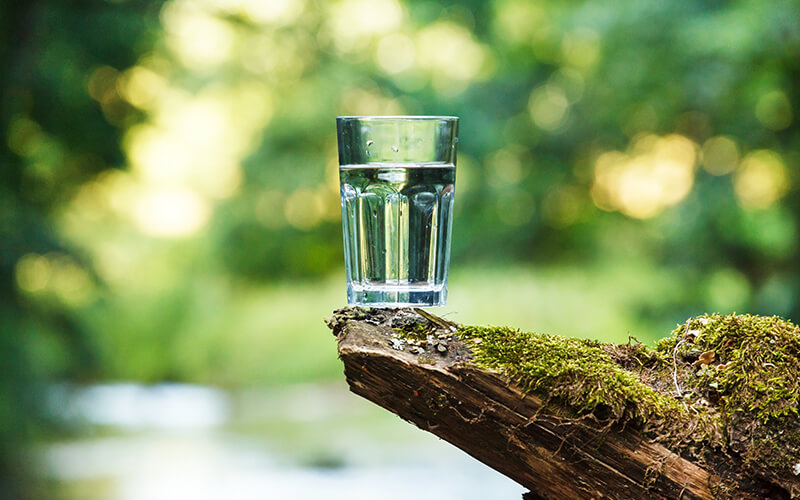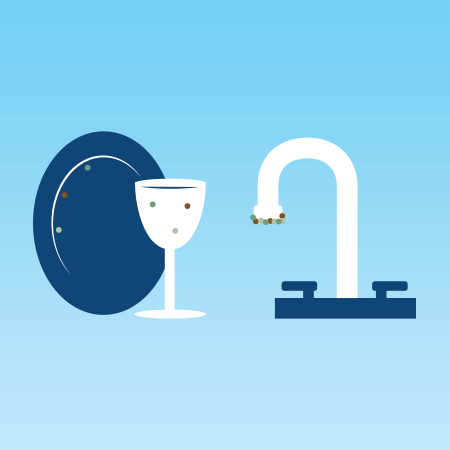HOW TO TEST YOUR WATER FOR HARMFUL CHEMICALS
What Are You Testing For?
You should perform a water test at least once a year. You’ll be looking for the two most common forms of water contaminants: coliform bacteria, and nitrates. However, it is also important to test for bacteria, lead, pesticides, chlorine, hardness, and pH. Keep in mind, your water will never be perfectly clean. But, there are certain levels of contaminants approved by the EPA that will not have adverse effects on your health. For example, lead is usually found in water but at such low levels that it does not pose a health risk.
Health Risks
There are many health risks associated with contaminated water. These include, rashes, stomach or liver illness, respiratory problems, neurological effects, reproductive and development problems and in severe cases cancer. The health effects are broken down into acute effects and chronic effects. Acute effects occur quickly, usually within hours after ingesting the contaminant. Usually, these don’t cause long-term issues and your body can typically fight off the infection. Chronic effects occur when the contaminant has been ingested over a prolonged period. Thus, allowing your body to be gradually weakened over time. Even if you think the water you drink is fine, it is best to test yearly to be sure.
Ask Your Water Company
The first place you should start is with your local water company. Most water companies are required to test the water for you. Water companies are required to provide Consumer Confidence Reports to the United States Environmental Protection Agency (EPA). The report is an in-depth analysis of everything in your water. It includes all contaminants that may be in your water along with the health risks associated with them. This is the most straightforward and comprehensive approach since the report provided is EPA approved and touches on more than the standardized tests.
Get Your Water Professionally Tested
Many people prefer to have a professional test their water. If you’d rather get your water professionally tested, visit a local lab that specializes in water contaminants. This is a great way to test for specific contaminants. If you or someone in your household is pregnant or expecting this is a great idea. You can visit National Testing Laboratories for customized water testing services. This includes testing for residences, commercial sites, and bottled water. Visit the EPAs Safe Drinking Water Hotline to be referred to the best local water testing agency, or the Water Quality Association site for approved testing companies. There are plenty of resources available online to help you find the best professional.
Test It Yourself
If you prefer, water test kits are available online and in store. Testing yourself is a quick, easy way to determine if your water is safe. If you notice anything unusual about your water like an odd smell, discoloration, or an abnormal taste. These test kits typically come with several strips containing reactants, and change color when a contaminant is present. Kits are around $15 and are an affordable and simple way to figure out what might be hiding in your water. However, it is important to keep in mind that home kits are less reliable. Typically they test for fewer contaminants than getting it done professionally.

Can You Trust Home Water Test Kits?
How I Tested the Water Test Kits
The water at my house comes from a 185 foot deep drilled well. It’s cold and clear and tastes fantastic.
When my husband and I bought the house a few years ago, we were told that the water was fine. But we never had it tested ourselves. It was always in the back of my mind that I really should get it checked, just to be sure. Finally, a few weeks ago, I ordered six different water test kits from Amazon. I decided to go with kits that are well known and that are affordable for most people. Then I scheduled an appointment with a guy from the well company to come out and do some testing. He spent about an hour collecting samples and then sent them off to Nelson Analytical Lab in Manchester, New Hampshire for analysis.
How the results compare to the professional lab analysis:
Mostly it agreed where they tested the same things. However, I would not trust this for testing fluoride if that’s a concern for you. The JNW Direct test detected no fluoride in my water, but the professional test measured fluoride at 1.6 ppm. That’s a significant discrepancy. In addition, the JNW Direct test detected no iron, but the professional test detected iron at 0.062 ppm. The hardness was off a bit, too.

Easy ways to test your water
Check with Your City
Each year by July 1, you should receive a short consumer confidence report or drinking water quality report in the mail or online notification from your water supplier. The report tells you where your water comes from and what’s in it, and some reports include your water hardness. If yours doesn’t, you can call your local water municipality, and they should be able to tell you.
Quick In-Home Testing
Without having to go too far out of your way, one of the easiest options for a hard water test is with a clear, clean, empty bottle with a cap, pure liquid soap and water right from your tap. Fill the bottle one-third full, add a few drops of pure liquid soap and shake vigorously for a few seconds. If there is a distinct lack of fluffy bubbles and the water appears cloudy and/or milky, your water is hard. Soft water would have copious bubbles, and the resting water at the bottom of the bottle would be clear. Keep in mind that because most soaps are formulated with detergents, they lather regardless of your water type. For the best results, use a basic soap, such as Castile, which is free of dyes, perfumes and detergents.
Advanced Testing Methods
After filling a glass with cold water from your bathroom sink, insert the test strip for several seconds and then remove it. Also, it’s important to note that you should not just stick the strip under running water, as this can provide inaccurate results. As the strip changes color, compare it to the color chart included in your kit. Each color on the chart corresponds to the hardness of your water, with results measured in grains per gallon (gpg).
What’s Your Number?
With over 85% of all households experiencing some degree of hard water, knowing your “number” will let you see where your hardness stacks up. Once you’ve tested your water with a strip or kit, the next step is to use your “number” to see just how hard your water is. The average hardness in the U.S. is about 13 grains, which is considered “very hard.” Anything over 14 grains is deemed “extremely hard.” Even if you don’t live in the high hard water zones, a household starts seeing the effects of hard water at around 7 grains of hardness.

Ways to Find Out If Your Drinking Water Is Safe
Check With Your Water Company
You know that bill you pay every month, or every quarter, for your drinking water? It’s the first stepping-stone on your search. Every year, your water agency is required by the United States Environmental Protection Agency to supply you with a Consumer Confidence Report, which is an annual water quality report that details any and all contaminants that may be present in your water and alerts you to the health risks they pose.
Search the Environmental Working Group’s National Drinking Water Database
This watchdog agency maintains a handy-dandy (and easier to use) database of water quality reports, searchable by zip code and by water company. At first glance, the results can be scary. That’s because the EWG highlights chemicals that are found to be above what it terms the “health limit” in addition to those that exceed the legal limit for safe water. The EWG’s data also includes many chemicals that aren’t regulated—meaning chemicals for which the EPA has not set legal limits. For these chemicals, it uses zero as the baseline, so water that contains any amount of the chemicals is flagged.
Use the EPA’s Drinking Water Watch Program
Eighteen states participate in the EPA’s Drinking Water Watch program, which links to a searchable database of detailed information on water quality violations, reported health hazards, and actions taken by the state to enforce water quality or clean up pollution.
Research Specific Contaminants
Once you have your water quality data, you can go a step further and look up each chemical of concern in EWG’s chemical database or in the EPA’s list of water contaminants. The Water Quality Association (a business association for the water treatment industry) has interesting information on emerging contaminants, but don’t get too worked up—the association represents companies that make money from water testing, so it has a vested interest in making you anxious.
If Your Water Comes From a Well…
When your water supply comes from a private or a community well as opposed to a municipal agency, you’ve got to do a little extra digging, as it were. The EPA has a comprehensive state-by-state guide to private drinking-water wells across the country, but once again, it’s ridiculously inconsistent. If the link for your state doesn’t take you to a helpful page, contact your state government directly to see if it has more up-to-date information.
How to Interpret a Water Analysis Report
Features of a Sample Report
Once the lab has completed testing your water, you will receive a report that looks similar to Figure 1. It will contain a list of contaminants tested, the concentrations, and, in some cases, highlight any problem contaminants. An important feature of the report is the units used to measure the contaminant level in your water. Milligrams per liter (mg/l) of water are used for substances like metals and nitrates. A milligram per liter is also equal to one part per million (ppm)–that is one part contaminant to one million parts water. About 0.03 of a teaspoon of sugar dissolved in a bathtub of water is an approximation of one ppm. For extremely toxic substances like pesticides, the units used are even smaller. In these cases, parts per billion (ppb) are used. Another unit found on some test reports is that used to measure radon–picocuries per liter. Some values like pH, hardness, conductance, and turbidity are reported in units specific to the test.
In addition to the test results, a lab may make notes on any contaminants that exceeded the PA DEP drinking water standards. For example, in Figure 1 the lab noted that total coliform bacteria and iron both exceeded the standards.
Retain your copy of the report in a safe place as a record of the quality of your water supply. If polluting activities such as mining occur in your area, you may need a record of past water quality to prove that your supply has been damaged.